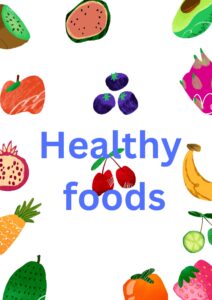Introduction
Because sugar is a necessary energy source, lots of people in today’s society eat considerably more of it than their bodies truly need. A diet high in sugar has been connected to a number of health issues, including diabetes, heart disease, dental caries, and obesity. Cutting down on intake of sugar may significantly improve general health and wellbeing. Here are some tips for cutting less on sugar for improved health.
Table of Contents
Understand the Different Types of Sugar
Sugars are not all made equal. Fruits, vegetables, and dairy products all include natural sugars along with vital elements including fiber, vitamins, and minerals. Then there are processed meals and drinks that include added sugars. When taken in in excess, these added sugars may cause weight gain and other health problems and have no nutritional benefit.
Limiting added sugars, which are often included in sodas, candies, baked goods, packed snacks, and even certain savory products like sauces and dressings, is crucial when trying to cut down on sugar.
Read carefully contents
One of the easiest methods to limit sugar consumption is by being more conscious of what you’re eating. Hidden sugars are included in many refined products under many labels, including honey, aloe nectar, cane glucose, and high sugar corn syrup. Always check the sugar amount on the package. Products with minimal to no added sugars are ideal. According to the American Heart Association, males should restrict their daily consumption of added sugar to 9 teaspoons (38 grams), while women should limit what they eat to 6 teaspoons (25 grams).
Cut Back on Sugary Drinks
One of the primary sources of added sugars in people’s diets are sugary beverages, such as fruit juices, sodas, energy drinks, and sweetened coffee. For example, nine spoons of sugar, which is already more than the daily allowance for women, may be found in a 12-ounce can of soda.
Cut Down on Sugar in Your Tea and Coffee
Coffee or tea is a common way for people to start their days, but it’s often loaded with sugar, and syrups, or sweetened creamers. Over time, even apparently little quantities of sugar in your morning cup may accumulate. Try lowering the amount of sugar in your beverages little by bit. You may start by reducing it by half or utilizing healthy sweeteners like sugar, monk fruit, or cinnamon for enhanced taste without the sugar.
Select for Whole Fruits against Dry or Fruit Juices
Although fruit has a natural sweetness, whole fruits are a great snack option since they are high in fiber, vitamins, and antioxidants. However, fruit liquids, even 100% fruit juice, may have high sugar content and often lack fiber. Furthermore, since the water content is removed, dried fruits can have higher sugar and calorie contents than fresh fruits.
Choose only fresh, entire fruits such as bananas, oranges, berries, and apples. In order to assist control blood sugar levels, they provide natural sugars that are regulated by fiber.
Increase Your Home Cooking
You have complete control over the items you use when you cook at home. It may be difficult to determine how much sugar has been added to food when eating out or purchasing prepared meals. Sauces and dressings in many restaurant dishes and take options include secret sugars.
You may cut less on sugar by cooking at home using whole, pure foods. Instead of using pre-made sauces that can have added sugar, concentrate on preparing fresh veggies, lean meats, whole grains, and fresh spices like garlic, ginger, or herbs for taste.
Eat some seeds and nuts. Rather than Sugary Snacks
When you need a fast snack, it’s simple to grab for candy, cookies, or chips, but these foods are often high in harmful fats and added sugars. Instead, have some fresh veggies with hummus or a handful of nuts or seeds as a snack. Unlike sugary snacks, they are nutrient-dense, satisfying, and won’t raise blood sugar levels.
Choose Nutritious Desserts
Saying no to sweets might be difficult if you have a sweet appetite, but there are healthier methods to sate your desires. Try creating sweets at home using natural sweeteners like fruit, maple syrup, or dates in place of cakes, cookies, and ice cream. A fruit salad or cinnamon-topped baked apples, for example may be just as filling without the excess of sugar.
Another choice that has less sugar than milk chocolate and has healthy antioxidants is dark chocolate (70% cocoa or more). Just keep in mind that control is important.
Recognize “Low-Fat” and “Fat-Free” Items
Although many “low-fat” and “fat-free” goods are promoted as healthier choices, they often use added sugars to boost taste in order to make up for a lack of fat. Make careful to read the labels to determine the amount of sugar in the items you choose.
Choose full-fat meals like dairy, cheese, and yogurt instead. When eaten in moderation, the fat content may be a healthy choice and help you feel full for longer.
Reduce Sugar carefully
Cutting down on sugar doesn’t have to happen all at once. In actuality, reducing gradually may make the procedure more sustainable and help your taste senses acclimate. Start by cutting down on sugary snacks or the amount of sugar in your tea or coffee. You will eventually discover that you are more content with natural tastes and have less cravings for sweets.






